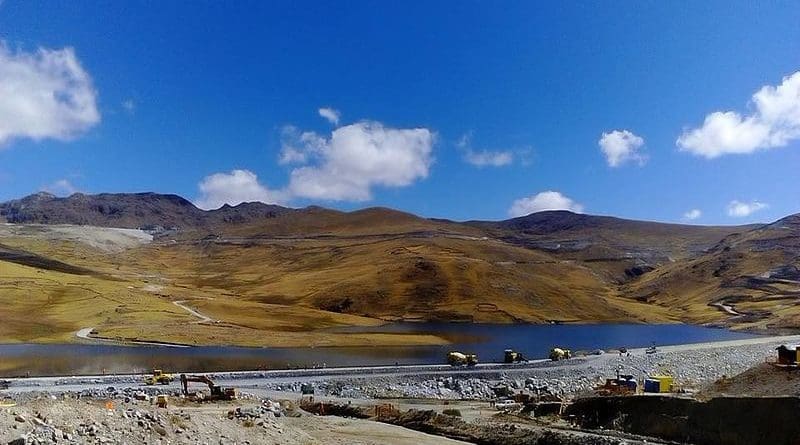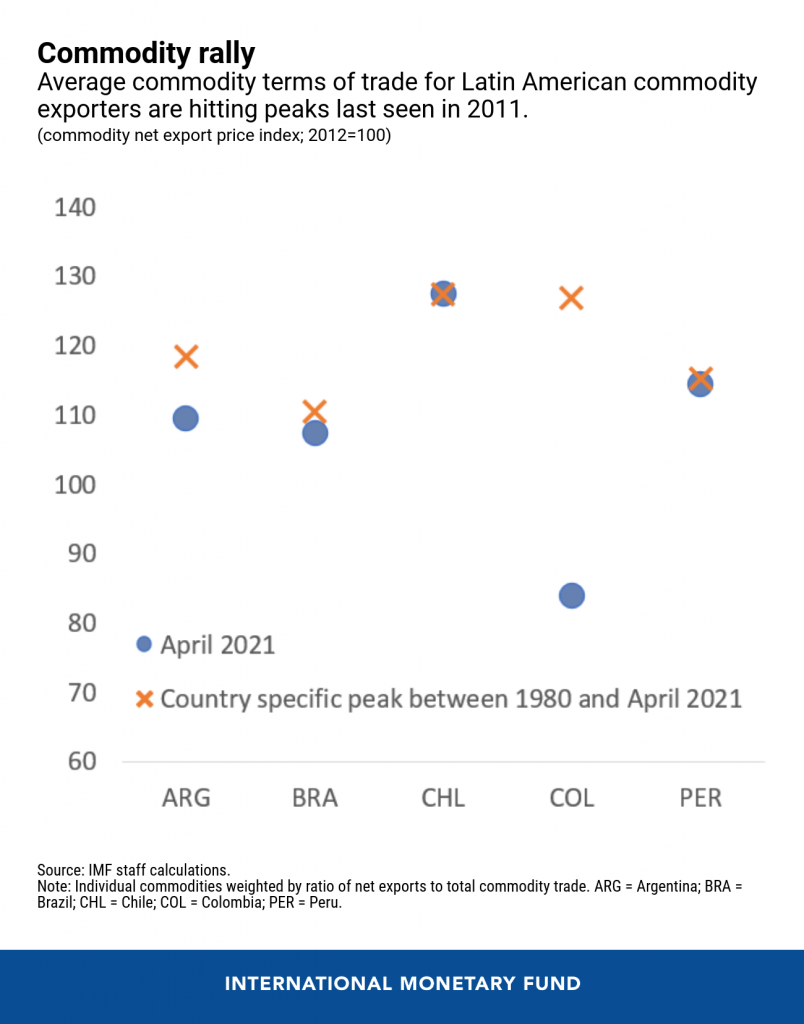What Comes After Commodity Super Cycle And Pandemic? Policies To Tackle Poverty And Inequality In Latin America – Analysis
By Antoinette Monsio Sayeh, Alejandro Werner, Ravi Balakrishnan and Frederik Toscani
Latin America entered the pandemic as one of the most unequal regions in the world. And like much of the rest of the world, it will come out of the pandemic poorer and more unequal. Early estimates suggest that 19 million more people in the region have fallen into poverty and inequality increased by 5 percent compared to pre-crisis levels. Large scale public support in many countries prevented an even worse outcome, but this pushed public debt levels from 68 to 77 percent of GDP. This will likely limit governments’ ability to tackle longer-term legacies of the pandemic once the recovery gains traction.
And yet, the outlook for poverty and inequality in the region could be brighter than it appears for two reasons: (i) resurgent commodity prices; and (ii) the opportunity provided by the pandemic for a broader political and social consensus on necessary reforms.
Making the most of resurgent commodity prices
Commodity terms of trade—the ratio between a country’s commodity export and import prices—have reached the highest level since 2011 for major Latin American commodity exporters. In Chile and Peru, commodity terms of trade are currently the most favorable since 1980 thanks to record prices of copper and other metals.
A new IMF departmental paper studies the remarkable progress Latin America made in reducing poverty and inequality during the 2000-14 commodity boom. finds that much of the progress reflected real labor income gains for lower-skilled workers, especially in services. The much-hailed cash transfer programs, such as the Bolsa Familia program in Brazil and Bono Juancito Pinto and Renta Dignidad in Bolivia also played an important albeit smaller role in most countries. This suggests that if high commodity prices are sustained, the commodity sector will again expand and draw in workers, raising wages and employment, and likely spilling over to other sectors, including some of the most affected by the COVID-19 pandemic.
Favorable commodity prices by themselves, however, will not be sufficient to durably reduce poverty and inequality in Latin American commodity exporters. Price volatility means that today’s gains can be tomorrow’s losses, as we saw when the boom turned to bust after 2014. Moreover, a post-pandemic world marked by materially higher public debt will constrain many countries. Governments will likely have less room to implement social transfers, both because of weak fiscal positions and the need to address potential scarring. This is why we believe Latin America needs transformative reforms and diversification away from commodities.
The moment of opportunity for transformative reforms
The historic pandemic-induced reversal in social progress could fuel polarization and reform paralysis in many Latin American countries but the crisis can also provide the conditions for a new political consensus on the way forward, especially when combined with favorable commodity price tailwinds. This could be an opportune time for considering comprehensive fiscal pacts to tackle long-standing structural problems.
1. More progressive public finance
Tax and transfer systems in the region are substantially less progressive than in advanced countries. More progressive public finance would help reduce inequality and create fiscal room for pro-growth and pro-poor policies. Latin America should increase the progressivity of personal income taxes by focusing on scaling back tax exemptions and combating tax evasion and avoidance. In some cases, policymakers should also consider a decrease in income thresholds for personal income taxes to bring more people with relatively high incomes into the tax net.
On the spending side, the pandemic has highlighted the need to improve the targeting of social transfers in many countries to ensure support for the vulnerable. More generally, several Latin American countries (e.g., Brazil and Colombia) have highly rigid current spending that is difficult to reign in given the lion’s share is on mandatory expenditures such as wages and pensions. This makes it challenging to have an adequate level of public investment and complicates the implementation of sustainable fiscal policy.
The large differences in eligibility for pensions and the structure of certain defined benefit systems also need to be fixed. In Peru, for example, high labor informality means that only about 30 percent of the economically active population are covered by the statutory pension schemes. Moreover, the majority of workers that do contribute to the public pension are unlikely to reach the minimum 20-year contribution period. This means they not only receive no pension – they also implicitly subsidize higher-income workers who do get a pension.
2. Preparing for the jobs of tomorrow
Given the structural transformations likely triggered or accelerated by the pandemic, the region should deploy policies to retrain workers to prepare them for the jobs of tomorrow. The pandemic has increased the inequality of educational opportunity, so policymakers must prioritize improvements in the access to, and the quality of, education. A strong and high-quality public education system will continue to provide the human capital Latin America needs for the economy of the future. Addressing Latin America’s high level of labor informality—again brought to the fore by the pandemic—should also be a priority.
3. More diversified economies
A difficult but crucial step is economic diversification. Studying strategies in countries which have successfully diversified, such as Korea, Malaysia and Singapore could be a good starting point. In Latin America, the agro-export boom in Peru, a traditional exporter of mining products, is an interesting case study. The boom would not have been possible without the construction of irrigation districts (which converted desertic areas near the coast into farmland), the existence of several free trade agreements, and the diligent work of the phytosanitary authority, which contributed to opening new markets. This suggests that a “whole of government” approach is needed.
Governments in Latin America face a formidable task. Although there is no silver bullet, the current crisis can be an opportunity for reform. Indeed, decisions taken in the next few years will likely have far-reaching consequences for the region. If Latin America can forge a political and social consensus to kick off these transformative reforms, it can get back on track towards sustainable social progress and build the foundations of a 21st century economy.
*About the authors:
- Antoinette Monsio Sayeh is Deputy Managing Director of the IMF and has been a Distinguished Visiting Fellow at the Center for Global Development (CGD) since November 2016.
- Alejandro Werner assumed his current position as Director of the Western Hemisphere Department of the International Monetary Fund in January 2013.
- Ravi Balakrishnan is the chief of the Advanced Economies unit in the European Department and manages the euro area team.
- Frederik Toscani is an economist in the Western Hemisphere Department, covering Brazil.
Source: This article was published by IMF Blog


